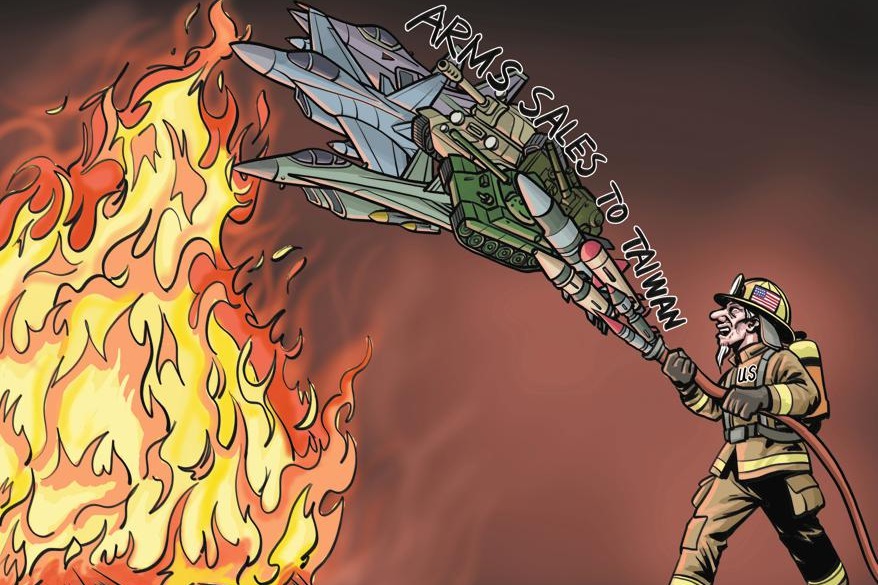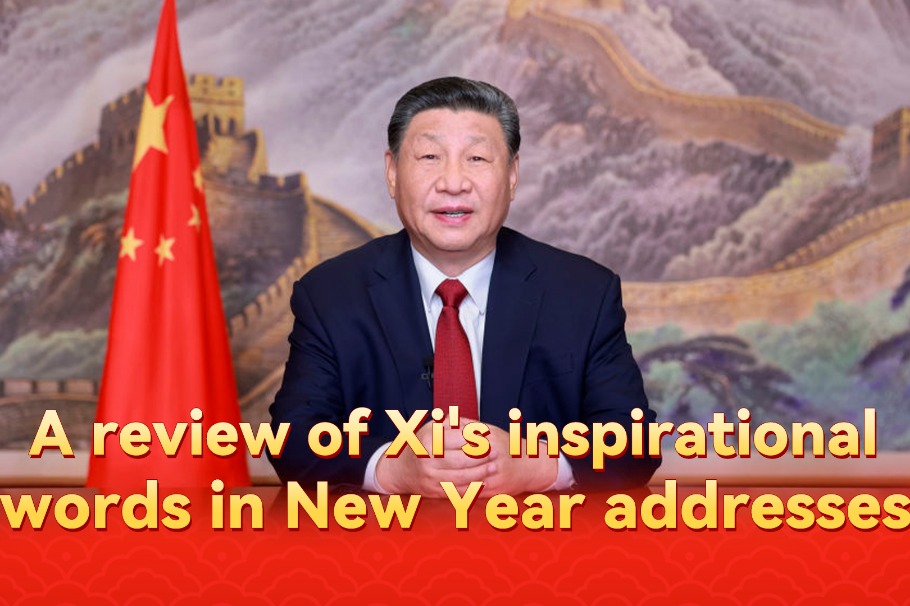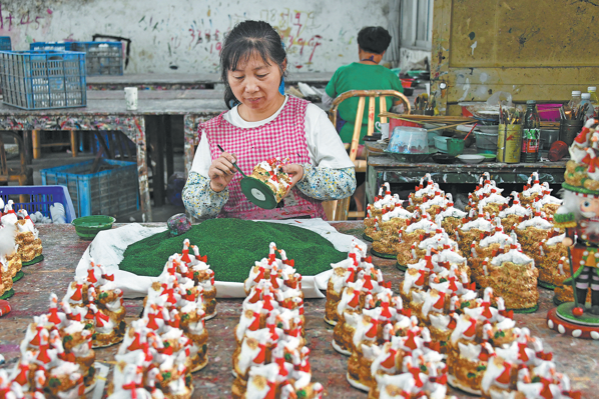Depicting the character of the Games
Painter's latest collection takes inspiration from the crucible of competition and Chinese tradition, Cao Chen reports in Shanghai.

To paint his series of 100 Chinese ink paintings themed on the 2022 Beijing Winter Olympics, Shanghai-based artist Wang Xuyuan found inspiration not in solitude and tranquillity-which are commonly associated with the art form-but in a cacophony from uplifting music and videos about winter sports competitions.
"I thought that it was important to feel the energy of the Olympics when creating the series," says the 64-year-old. "The power and competitiveness of the Olympic Games pushed me to elevate ink painting beyond its traditional style. I could only achieve this when stimulated by the excitement felt during competition."
Featuring the dynamic movements of athletes, the ink painting series was compiled into a book some weeks ago and is expected to be published this month.
Wang, a veteran artist with two decades of experience, came up with the idea to stimulate his imagination when he attended the 2010 Vancouver Winter Olympics during a visit to Canada to see his daughter.
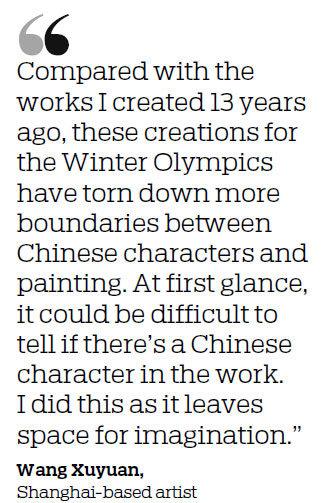
"My experience of painting pieces that feature arctic elements such as icebergs, penguins and mountains also facilitated my understanding of winter and ice," he adds.
One of his most eye-catching ink paintings is an installation series titled Arctic Ink, which made its debut at the Global Scientists Conference held in Davos, Switzerland, in 2018. For this series, Wang used water derived from Arctic ice to mix his ink.
In a previous interview with China Daily, Wang said he was astounded by the charm of nature and the universe when he first set foot in the Arctic.
"I was determined to protect this beautiful kingdom. I felt so small when surrounded by the myriad stars and the gorgeous aurora borealis over my head," he says.
Wang sees the ice from polar regions as something "still and solemn", whereas the snow or ice at the Olympics, he says, is vibrant.
To depict the movement of the athletes, Wang watched videos of the Olympics and read books to find the most attractive poses. For example, he found that the most eye-catching moment in figure skating is when female skaters spin on the ice.
"The position is similar to the Chinese character dong written in flowing calligraphy. Hence in the series, the skater's head is depicted as the first, left-slanting downward stroke of the character. Her legs and feet could be seen as the last two-dot strokes of the character, and the other parts of the body could be portrayed as the rest," Wang explains.
Besides paintings done on Chinese art paper, some of his works in the series are also presented on blue and white ceramic, an art form that dates back to the Tang Dynasty (618-907). The reason for choosing this approach, he says, is that blue and white can be used to represent ice and snow.
This is not the first time Wang has brought out the essence of the Olympics through Chinese ink painting. In 2008, Wang held an exhibition featuring 41 of his ink paintings themed around the 2008 Beijing Summer Olympics.
One of the works, titled Chao, or Nest, depicts the Beijing National Stadium, commonly referred to as the Bird's Nest in the capital and "symbolizes the cradle of life, which embodies the hope of humankind", says Wang. The painting can currently be seen at the Olympic Museum in Lausanne, Switzerland.
"Compared with the works I created 13 years ago, these creations for the Winter Olympics have torn down more boundaries between Chinese characters and painting," he says. "At first glance, it could be difficult to tell if there's a Chinese character in the work. I did this as it leaves space for imagination."
"As the Olympics Games promote cultural exchanges, I hope my work will help an international audience learn more about Chinese aesthetics, philosophy and traditions, and pay tribute to the Olympic spirit," he adds.
Wang's Winter Olympics series of paintings will be displayed to the public in Beijing and Shanghai this year.
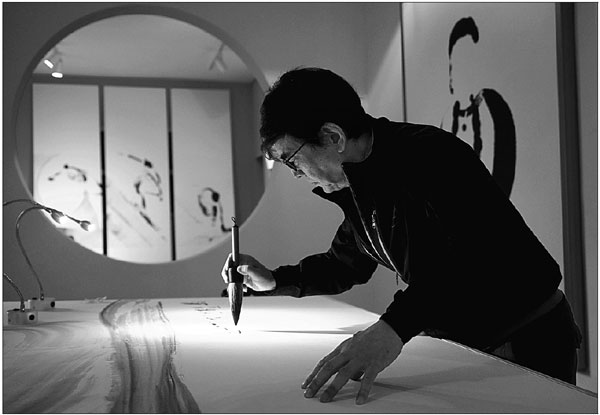
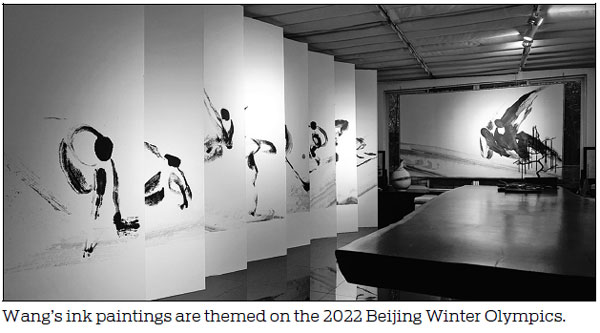
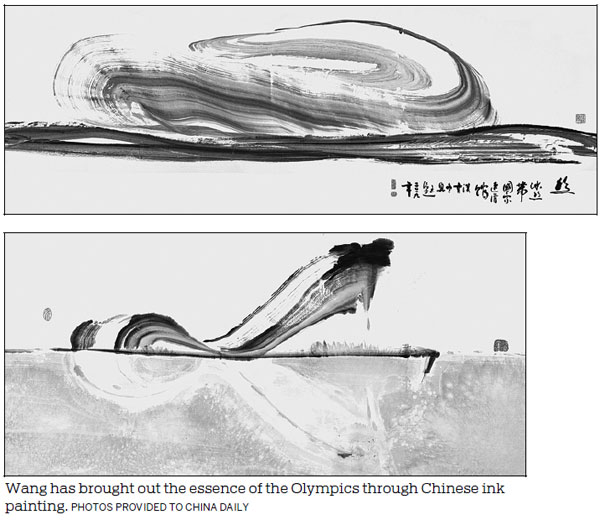
Today's Top News
- US actions fail to match its words on Taiwan question
- China's diplomacy to blaze new trails
- Visits point way to better future for all
- PLA tests joint combat strength for second day
- Xi stresses advancing rural areas' vitalization
- US arms sale to Taiwan will lead secessionists toward destruction
















